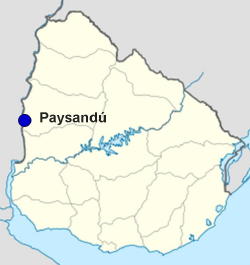Petrobras, Brasil’s state oil company, announced in a press release that it was selling its offshore oil exploration interests in two blocks off Punta del Este to the Anglo-Dutch company Shell. The sale is still subject to approval by Uruguay’s regulatory authorities and to approval by Uruguay’s state energy company Ancap.
Petrobras owned 40% of the rights to the offshore exploration blocks Ancap designated three and four. The Argentinean company YPF owns 40% of both and the Portuguese oil company Galp Energía owns 20%. Petrobras had agreed with YPF to handle operations in block four and let YPF take charge of operations in block three.
This transaction is not the first significant sale between the Petrobras and Shell. At the end of 2005 Shell sold all of its service stations in Uruguay, Colombia and Paraguay for $140 million USD to Petrobras. Petrobras currently operates 89 service stations in Uruguay.
“This operation represents another important step in the Petrobras’ Divestment Program (Prodesin), outlined in the 2013-2017 Business and Spending Plan”, Petrobras stated.
Petrobras announced a divestment plan to combat its current liquidity problems. The company plans to divest more than $9 billion USD, and has already sold various assets in countries such as Argentina, Colombia and Mexico.
Ancap awarded the exploration rights to blocks three and four in 2009. They were only ones awarded in the Ancap’s Uruguay round I which was designed to increase interest in offshore exploration in Uruguay. The exploration period for blocks three and four ends in May 2014. After that deadline the companies holding the rights to these blocks have two years to build wells.
Ancap conducted Uruguay round II in which it awarded eight blocks: three to British Petroleum, three to British Gas, one to the French company Total and one to the Irish company Tullow Oil which sold 30% of their rights to the Japanese company Inpex.
In March of 2013, Ancap began promoting Uruguay round III which will feature six blocks.
This Uruguayan Business Reports news article is a translation of a news article that appeared in the Uruguayan newspaper El País. The original article is available in Spanish here. Uruguay Business Reports translation by Donovan Carberry.




